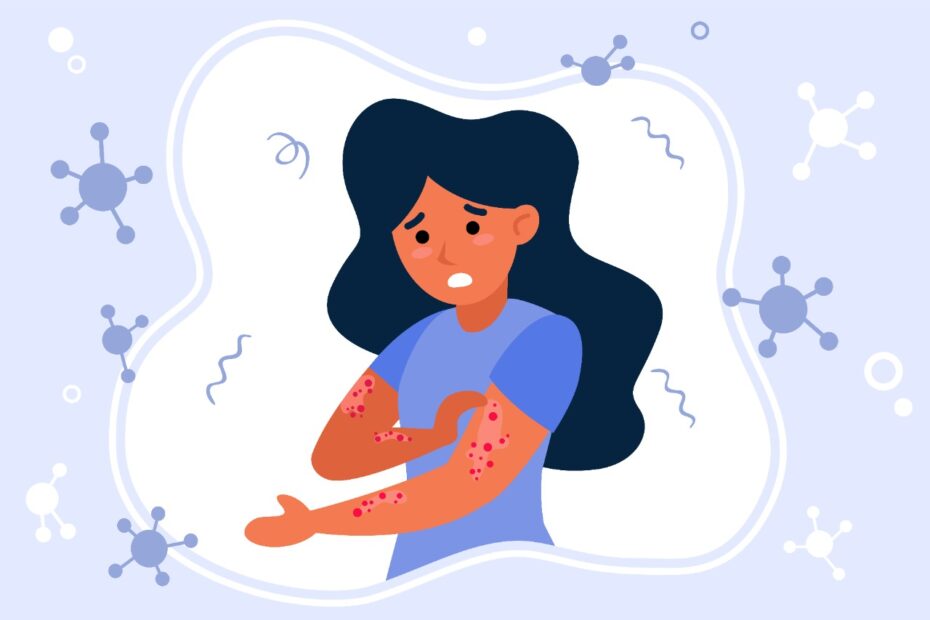Monkeypox is a virus infection, first seen in Monkeys but now a raging outbreak in the West. It has been declared a health emergency by the WHO.
Initially, the virus found in monkeys in Africa was in humans for the first time in Congo in 1970. We have thousands of cases every day in different parts of Europe and America.
The virus causing the current outbreak seems to have originated from West Africa. However, no direct travel history is evident in the affected individuals.
It is worrying the WHO to be the next pandemic after COVID-19.
Symptoms of Monkeypox virus
The symptoms of smallpox are very distinctive, and it is surprisingly similar to smallpox from around the world. In an infected person, it can cause the following:
1. Fever: it is usually greater than 38.5 degrees Celsius.
2. Headaches
3. Muscle ache or body aches.
4. Rash
5. Swelling of lymph nodes
6. A peculiar rash that resembles smallpox.
7. Back pain
8. Fatigue
In the current outbreak, the infected individuals have only one or a few lesions, which may or may not be associated with a fever.
The symptoms start 1-2 weeks after getting infected. It starts with swelling in the neck, back pain, headache, fever, and fatigue. The rash begins within three days of the start of the fever. It starts as a slight flat rash called a macule, and becomes a raised rash, called a papule. Then the rash gets filled with fluid to form a cyst. The vesicle gets filled with pus-like fluid to form a pustule. This pustule bursts open to form a crust that dries and falls off.
These symptoms last for 2-3 weeks before the person recovers.
Is Monkeypox dangerous?
It is very infective, but the disease is self-limiting. After 1-2 weeks of illness, it resolves on its own. Some parts of the population like children, pregnant women, people on steroids, people with HIV, and those with a deficient immune system are more susceptible to severe disease. Its mortality rate was less than 3-6% of the total.
The current strain involved in the outbreak, the West Africa strain, is less severe when compared to the other strain called the Congo strain.
Transmission of Monkeypox
It is transmitted from animals to humans by contact with blood, body fluid, infected rashes and even by eating uncooked meat of the infected animal.
In the case of human-to-human transmission, it spreads with
1. Close contact like kissing or hugging can transmit respiratory droplets.
2. Sharing of close personal items which have been in contact with the rash or body fluid of the infected person.
3. Contact with infected rashes.
4. contact with body fluids like saliva, respiratory secretions, and genital secretions.
Males who have sex with Males are at a higher risk of infection when compared to the average population. In those with HIV, the transmission and infection rates are higher.
Anyone in close contact with the infected individual must monitor themselves for symptoms 21 days after contact with the infected person. They need to look for signs and symptoms of the disease and check their temperature twice a day.
Diagnosis
Clinically, it resembles several other viral infections like chicken pox, measles, scabies, etc. To distinguish it from the above diseases, a PCR test is helpful. Technicians in a PPE suit collect the test sample to avoid spreading the infection. It is a swab from the infected lesions whose testing is in a DNA PCR test machine that confirms the diagnosis. Isolation, treatment, and tracing of contacts can then begin.
Treatment
There is no specific treatment, mainly managed based on the symptoms. Giving oral or I.V fluids to prevent dehydration, paracetamol for fever, and antibiotics to prevent bacterial infection is the mainstay of treatment. Sometimes an antiviral called tecovirimat is used, and hospitalization is only in severe cases.
How do you stay safe from Monkeypox?
Monkeypox is a droplet infection and can also have transmission through close personal contact.
People at risk can take the following precautions to prevent smallpox:
1. Practice respiratory hygiene. Wear a mask in crowded places, and wash and sanitize hands frequently.
2. If you feel like you have the symptoms, report to your nearest hospital immediately.
3. Help the authorities track other cases you may know by encouraging them to get treatment.
4. Stay informed about the disease and its symptoms.
5. Those working in close contact with the monkeypox-infected individuals need to take a vaccine for smallpox as it paradoxically also improves immunity against Monkeypox. This vaccination is the current strategy used to protect the healthcare workers in this outbreak.
6. Practicing safe sex is also a must as it is a sexually transmitted disease.

